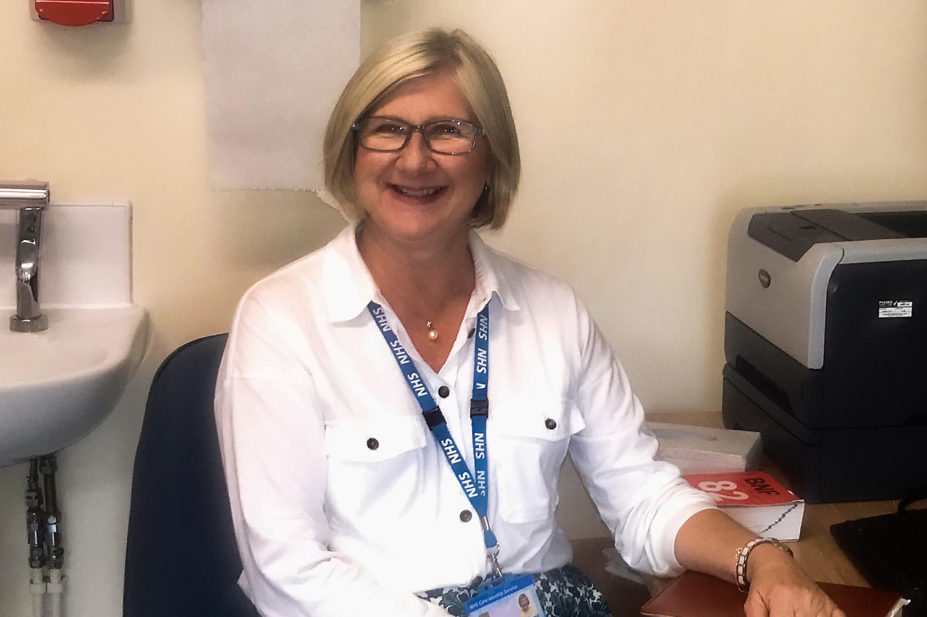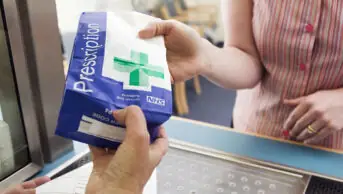
Dianne Sanderson
Dianne Sanderson has a portfolio career, spending part of her week as the senior pharmacist in a primary care network overseeing a team of six pharmacists and three technicians, and the rest of the time in a community dermatology service.
Her interest in dermatology was piqued by a study day focusing on common dermatological conditions, which she found she “absolutely loved”. When a part-time position specialising in this came up, she jumped at the chance.
Her work involves measuring patients’ responses to systemic treatments, blood monitoring and titration of treatments, and giving pharmaceutical input to consultants.
I have the time with the patient to give them an in-depth explanation of their treatment
“They will have an initial consultation with a consultant and then be referred to me for monitoring. I have the time with the patient to give them an in-depth explanation of their treatment,” she says.
Sometimes what she tells patients comes as a surprise to them — including those who were unaware that their use of topical steroids could be what is driving their condition. In some cases, stopping use can be transformative for their skin condition.
Patients generally appreciate having someone with time to focus on their medicines, she says, and, as an independent prescriber, she has autonomy to tweak their drugs. In the primary care side of her job, she does a lot of work with patients with respiratory conditions, including on inhaler technique. But patients often have their own concerns they want to raise with her.
Being a prescriber is a doubled-edged sword
Sanderson believes chronic conditions are an area where prescribing pharmacists can really shine. “Being a prescriber is a doubled-edged sword. You have the opportunity to use all that clinical training. But equally, unless you are very well trained and experienced, and have a particular experience in diagnosis, I think our role is better used on chronic conditions,” she says. “We are trained to work safely and within certain parameters … you have this kind of inner voice and you know when you are not confident. People find that balance of being brave enough to do what you are able to do but doing that safely and putting a safety net in place.”
She qualified as a pharmacist in the 1980s and went on to do a diploma on prescribing in primary care.
At that time, many pharmacists were not doing much more than dispensing and Sanderson felt all the knowledge she had acquired in training was not being used.
That’s the most challenging part — pharmacists are not trained in anatomy and actively touching people
When she did her independent prescriber course in 2015, there was only several pharmacists on the course and they were outnumbered by nurses. “We were in awe of them because of their examination skills. That’s the most challenging part — pharmacists are not trained in anatomy and actively touching people. It’s a little bit out of your comfort zone at first.”
She finds GPs are appreciative of having a pharmacist in the multidisciplinary team and has become the “go-to” person on some things. She gives a lot of advice on guidelines, alternatives to certain drugs (if there are stock issues) and side effects but has made it clear she does not want to step on anyone’s toes. And the number of patients who have asked to see a doctor instead can be counted on one hand, she says.
Her knowledge of skin diseases now means the GPs she works with send many patients with eczema and psoriasis to her, recognising her knowledge and skill in this area.
Her advice to other pharmacists thinking of becoming prescribers would be: “If you can find an area of input that will benefit where you work and you are really passionate about, then focus on it.”
Quick fire questions
- How many prescriptions do you write? “About 30 to 35 a week.”
- Do you do more prescribing or deprescribing? “Probably deprescribing.”
- Any regrets about qualifying as an independent prescriber? “No, but if you had asked me [earlier in my career], I would have said I wished I had resat my A levels and done medicine at university.”
- Favourite part of the working day? “If I see a patient face-to-face that’s my favourite time of day — to have that interaction and get that human response.”
- How do you destress? “I love to sit in the garden and go for coffee with friends.”
- What makes your heart sink? “When I come across colleagues who have missed an opportunity or given poor advice. Some of my colleagues in pharmacy are reluctant to embrace extended roles and push things back rather than dealing with them themselves.”
- What makes your heart sing? “Making a difference to someone because of an intervention I have made.”
Click here to return to ‘Meet the prescribers: pharmacists transforming care for patients’


